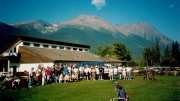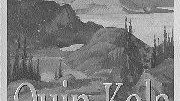Many prospectors and exploration teams deliberately avoid small tracts of land for various understandable reasons. However, in the hope that I might encourage some of my fellow prospectors to think more kindly of smaller tracts, I’d like to cite an example of an orebody worth US$750 million that was shunned for years because it was embraced by a mere ten acres.
In 1967, Edwin Van Sickle, owner of various mining properties in western Montana, was concerned about the annual requirement for assessment work on some of his unpatented claims and thought that some geochemical work was in order. On the recommendation of Dr. F.N. Earl at Butte, Mont., he retained me to conduct the geochemical surveys.
The survey of Van Sickle’s Mary Lou property consisted of forty-six soil samples on hundred-foot centres. Each of these samples was removed from a depth of about six inches and tested in the field without drying or screening through the use of a cold ammonium citrate test for total heavy metals. The field test extracts and measures about five per cent of the available metal and is calibrated in zinc-equivalents. The gentle terrain, lack of dense vegetation, ready access, and small area made it possible for one person to complete the entire survey in one day.
Earlier geochemical work by the U.S. Geological Survey and by various private parties had shown an extensive zone of anomalous metal values trending several miles west from the well-known Alta gold-silver mine in Jefferson Cty., Mont. However, the Mary Lou anomaly was conspicuously intense, with numerous samples suggesting several per cent in the soil rather than the usual parts per million.
My attempts to interest major mining companies in the property proved futile: no one was interested in ten-acre land packages. The results of the 1967 survey were left for public inspection at the Montana Bureau of Mines & Geology, but an incredible number of years lapsed before more thorough investigators returned to the scene and provided a logical explanation of the Mary Lou anomaly.
By coincidence, the property lines in 1967 and the limits of the geochemical survey conformed closely to a surface trace of a nearly vertical volcanic pipe that hosts the Montana Tunnels deposit. Published reserve estimates add up to 2 million ounces gold and 20 million ounces silver. The property was anomalous because it contained only ten acres of mineralization.
— The author is an engineer and professional geologist based in Sierra Vista, Ariz.



Be the first to comment on "Odds ‘n’ sods: Sometimes smaller is better"